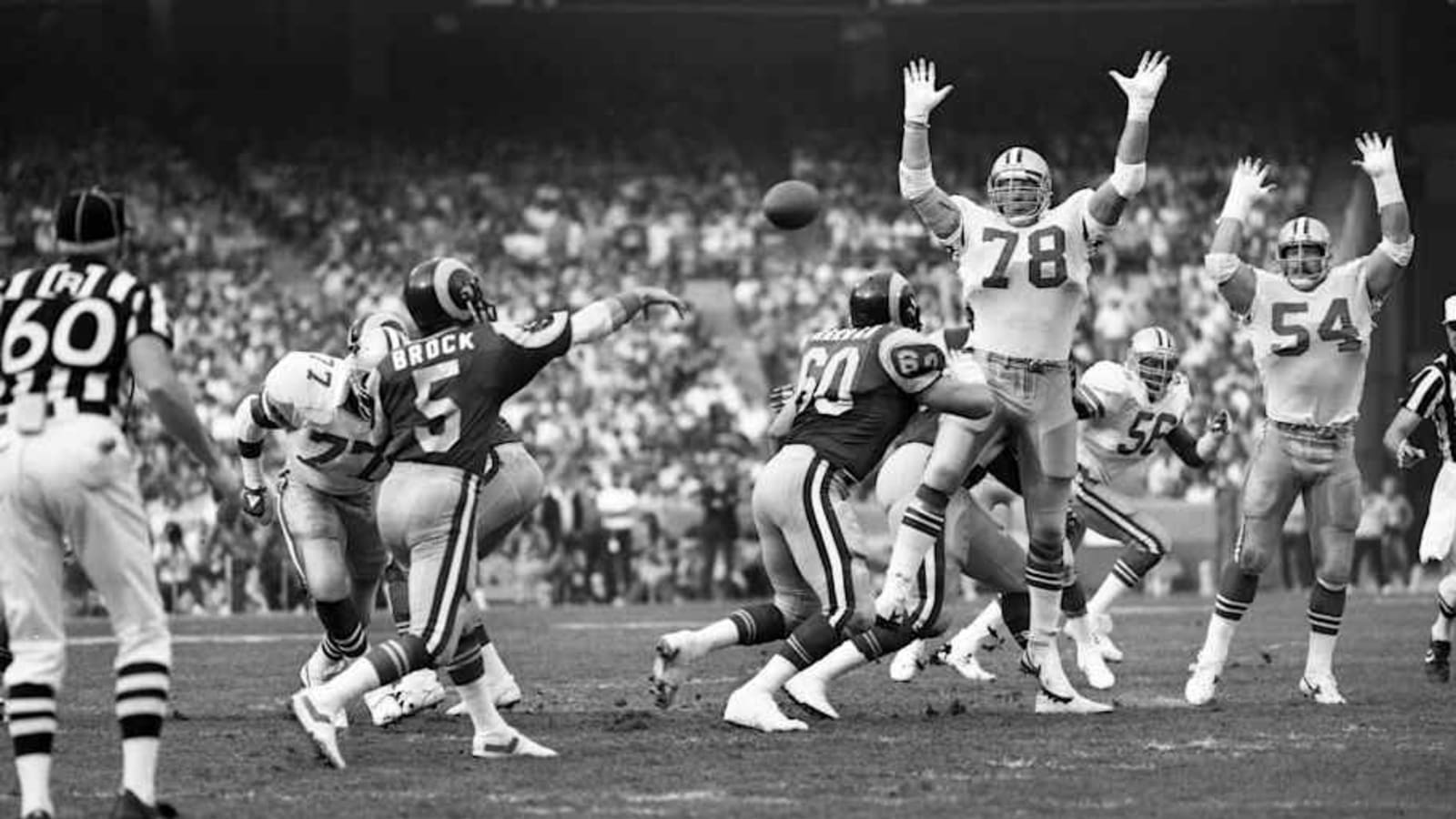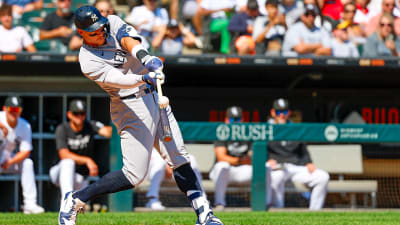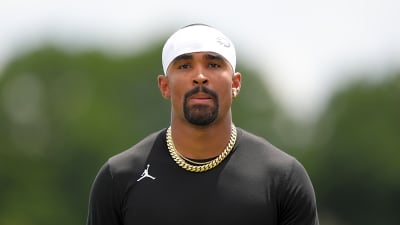
In college football, games and legacies can be decided by a matter of inches.
Throughout much of college football history, even a single loss could derail a team’s hopes for a national championship. A tipped pass, a bad call, or an unlucky ball bounce can flip a game's outcome in one-score games.
Inspired by the Nebraska Cornhuskers' historic trend of losing so many close games over the last decade, I decided to dive into college football history to see how different the sport might look if the outcome of every one-score game was flipped season by season.
Welcome to What If: The 1974 College Football Season.
Other What If seasons: 1973
What Did Happen:
Oklahoma opened the 1974 college football season as the nation's top-ranked team after an impressive inaugural season under head coach Barry Switzer. However, the Sooners were suspended by the Big 8 for their second season for using ineligible players and banned from the postseason. The rest of the AP’s top 5 was rounded out by some of the best teams from the 1973 season, with Sugar Bowl participants Notre Dame and Alabama ranked third and fourth, and Rose Bowl participants Ohio State and USC ranked second and fifth, respectively.
Despite starting at the top of the AP Poll, the Sooners spent two months going undefeated and sitting outside of the top spot. Oklahoma didn't let that stop them from dominating their opponents, going 11-0 and winning the Big Eight Conference. They also had one of the best running backs in program history, Joe Washington, who finished third in the Heisman voting. Losses by Notre Dame to Purdue and Ohio State to Michigan State would help the Sooners reclaim the No. 1 spot in the AP Poll, which it wouldn’t relinquish until a month into the 1975 season.
Unbeaten Teams: Oklahoma (11-0), Alabama (11-0), Miami OH (9-0-1)
In the Big 10, The Game resulted in agony for Wolverine fans for the second straight season. An offseason rule change required field goals to travel between the uprights to count. Before this season, traveling over the upright was ruled a made kick. The Wolverines trailed by two with 18 seconds left when Michigan kicker Mike Lantry came out for a 33-yard field goal. Lantry’s attempt from the right hash sailed left, and refs ruled it went over the left upright. Buckeye fans poured onto the field and tore down the goalposts while Lantry slowly walked off.
The results of The Game helped propel Archie Griffin to his first of two Heisman trophies. Griffin beat USC’s Anthony Davis by a comfortable margin, but the vote was not without controversy. USC trailed Notre Dame 24-0 late in the second quarter when the Trojan’s Davis caught a pass for a touchdown to trim the lead to 18 at the half. Davis opened the second half by returning the Irish kickoff for a touchdown which was part of a 55-0 scoring run. Davis’s Heisman moment came a little too late, as Heisman ballots were due before the game.
Despite its postseason ban, AP voters ranked the Sooners No. 1 overall and declared them national champions after an 11-0 season. The top two Heisman voter-getters would meet again in the Rose Bowl, with the Trojans coming out on top. The coaches would vote for USC as the No. 1 team, leading to a split title for a second straight season between college football blue bloods.
What Almost Happened:
Air Force was the biggest beneficiary of this exercise, with its record improving from 2-9 to 8-3. Air Force coach Ben Martin had the Falcons at six straight winning seasons, which would improve to seven straight in this alternate scenario. Virginia Tech's win total jumped by five games, giving the Hokies a 9-2 record, making them the top independent team in the nation and in the conversation for a major bowl appearance.
Six teams each lose four wins in our hypothetical. Most notable is the actual Orange Bowl champion, Notre Dame, who would drop to just 5-6. Ara Parseghian left coaching after the 1974 season due to personal reasons. Unfortunately, the future Hall of Famer of college football would not go out on as favorable of a note as he did in reality.
In this world Mike Lantry makes his kick for Michigan to win The Game versus Ohio State. While that loss would likely spoil the Buckeyes title hopes, Archie Griffin and Ohio State still head to the Rose Bowl as the Big 10 champions. USC’s record remains unchanged, and Anthony Davis’s Trojans play USC in the Rose Bowl. Griffin still takes home his first Heisman in our alternate world.
Unbeaten Teams: Maryland (11-0)
Outside of the Rose Bowl, the rest of the major bowls see a shakeup in the alternative scenario. Texas A&M becomes the new Southwest Conference winner, earning a trip to the Cotton Bowl. The Aggies face Nebraska, who finished second in the Big 8 behind the ineligible Sooners. Maryland, with its perfect record, faces Texas in the Orange Bowl. Now 8-3, Alabama still wins the SEC, earning the Tide a trip to the Sugar Bowl against Virginia Tech.
Maryland enters the bowl season with a chance to win a title outright if it beats the Longhorns. A loss leaves the Terps, Sooners, and the Rose Bowl Champions all as one-loss teams. Oklahoma’s lack of a bowl game likely leaves them outside of title contention in the voters' minds.
The hypothetical Rose Bowl goes the same way as the actual Rose Bowl, given the matchup remains the same. Nebraska quarterback Dave Humm finished fifth in Heisman voting in 1974. The Husker offense finished that season seventh in scoring and eighth in scoring defense. Ultimately, I think the Huskers would be too much for the Aggies.
In the scenario, Bear Bryant’s Crimson Tide suffer three regular-season losses, including a week 1 matchup with undefeated Maryland, but still go on to win the SEC. The Tide finished in the top 10 on both sides of the ball and would match up well with a suspect Hokie defense. Virginia Tech quarterback Bruce Arians was a dangerous rushing threat, scoring 11 touchdowns on the ground. However, the Virginia Tech defense would be unable to keep Alabama from rolling into the end zone.
The Orange Bowl would’ve been strength on strength as Texas had the fifth-ranked scoring offense while Maryland had the fifth-ranked scoring defense in 1974. Texas was led by freshman running back Earl Campbell. While Campbell would go on to be one of the greatest players of all time, he would've been too young to lead Texas to a title this season. Legendary defensive lineman Randy White led Maryland’s defense. White took home the Outland and Lombardi trophies. In this world, he adds an Orange Bowl and national championship trophy to Maryland’s collection.
Unlike the 1973 What If, this season has a dramatic change. In reality, two bluebloods, USC and Oklahoma, split the title. In the alternate world, Jerry Claiborne leads Maryland to their second title in program history. Claiborne would have several more successful seasons at Maryland and eventually make his way to the College Football Hall of Fame. A title in 1974 could have propelled his career even further.
MORE: How to Watch Nebraska Men’s Basketball vs. No. 18 Illinois: Preview, Breakdown, TV Channel
MORE: How to Watch Nebraska Women’s Basketball at Purdue: Preview, Breakdown, TV Channel
MORE: Carriker Chronicles: Sean Callahan on Whether Matt Rhule is "The Guy" for Nebraska Football
MORE: Former Nebrasketball Guard Bryce McGowens Selected for 2025 Castrol Rising Stars Showcase
MORE: Nebraska Quarterback Dylan Raiola Opens at +5000 to Win the 2025 Heisman Trophy
More must-reads:
- Texas HC addresses Arch Manning injury rumors
- Five takeaways from CFB Week 2: OU is back, Oregon is dangerous and Billy Napier is feeling the heat
- The 'College football FBS nicknames' quiz
Breaking News
Trending News
Customize Your Newsletter
 +
+
Get the latest news and rumors, customized to your favorite sports and teams. Emailed daily. Always free!








